Life on Earth has been subjected to many extinction events, yet five are considered major extinction events. All previous extinction events were related to climate change – triggered by bolide impacts or major volcanic eruptions. The sixth major extinction, the one we are experiencing now, is also driven by climate change. The changing climate is due to the greenhouse gases produced by the way we live. It is a political problem and we can solve it.
The information on this page tells the story of human-driven climate change. The sixth mass extinction, sea level rise, energetic storms, and a reduction in ecosystem services are just some of the problems associated with the climate crisis. Climate change is a threat multiplier – that is, any threats that we face are only exacerbated by the climate crisis.
Improvements in energy efficiency is one direction we can take – we can do it today. We can put a price on carbon. Learn about carbon pricing and contact your Member of Congress.
Explore this page and learn a bit more about the climate crisis.
The atmosphere is a thin layer – astronauts refer to it as the thin blue line. All of the weather happens in the lowest layer of the atmosphere, known as the troposphere. It is approximately 11 km thick and is the region of the atmosphere where the greenhouse gases reside.

Four gases define most of the atmospheric chemistry. Although not abundant, there are six gases known as greenhouse gases: carbon dioxide (CO2), methane (CH4), chlorofluorocarbons (CFC), water (H20), ozone (O3), and some of the nitrous oxides (NOx). Greenhouse gases absorb heat generated from Earth’s surface.

Note: Ozone is a greenhouse gas, but it also blocks harmful ultraviolet radiation from the sun and therefore protects us from getting skin cancer. Unfortunately, another greenhouse gas, the chlorofluorocarbon family of gases, destroys ozone. This is not good.
Greenhouse gases are the right molecular size to trap infrared radiation emitted (generated, not reflected) from Earth’s surface. As the greenhouse gas concentration increases, so does the ability of the atmosphere to trap more heat. This is known as global warming.
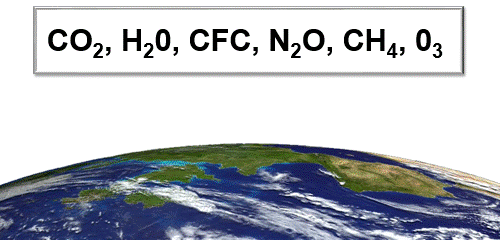
The concentration of atmospheric greenhouse gases continues to increase through burning fossil fuels, deforestation, farming, decaying organics, belching cows, refrigerants, electronic parts cleaners, and many other actions we choose.

Atmospheric carbon dioxide concentrations began to increase more rapidly during the past 100 years; since the Industrial Revolution.
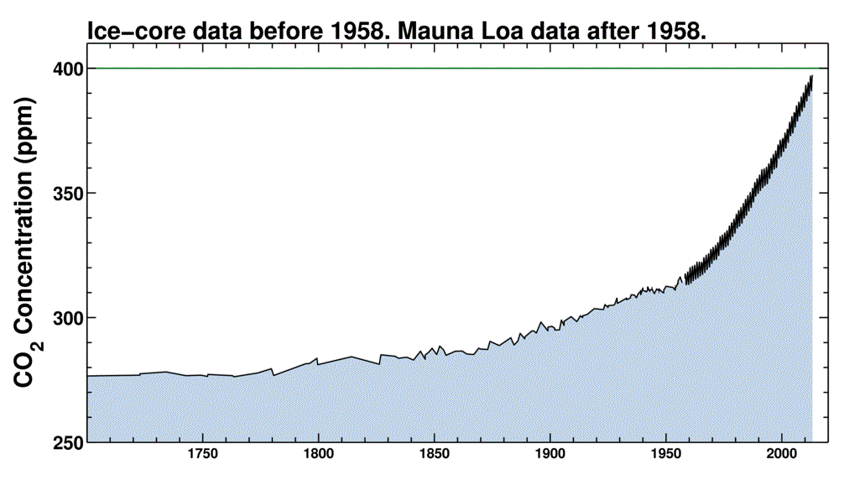
There is a long-term correlation between atmospheric carbon dioxide concentrations and temperature. As carbon dioxide concentrations increase, so does temperature. The cyclical pattern in global temperatures, known as the Milankovitch Cycles, has been consistent for the past 400,000 years, yet it has broken down during the past 100 years. What has changed?

Global land and ocean temperatures continue to increase.

Global ocean heat content continues to increase. Cheng et al. (2020) argue that for the past 25 years, the oceans have been warming at a rate of five atom bombs per second (equal to 3.6 billion Hiroshima explosions). All weather events continue to be more powerful because evaporating ocean water puts more energy in the atmosphere. It takes a lot of energy to heat up water, the oceans are holding a lot of heat, and the atmosphere is holding a lot of energy.

Global sea ice continues to shrink. The loss of sea ice in 2016 is astounding. Melting ice, and warmer ocean water, result in sea level rise.
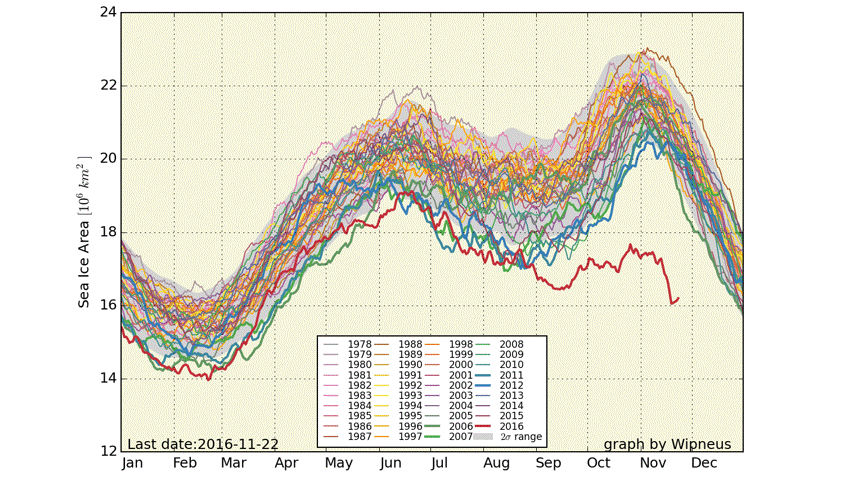
Sea levels are rising at an ever-increasing rate. Living along shorelines may be beautiful, but it is also dangerous. As sea levels continue to rise, those who live along shore lines will have to move.

Atlantic basin hurricanes continue to increase. Warmer ocean waters put more energy in the atmosphere, and hurricanes release this energy. The storms are getting larger.
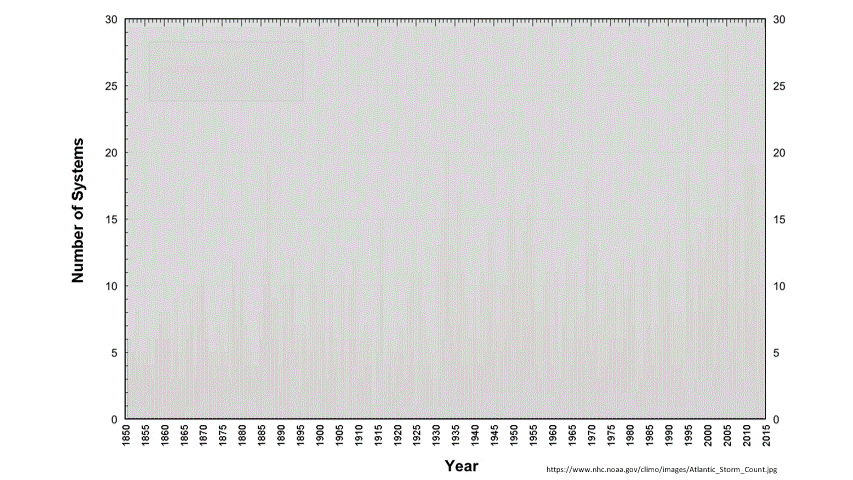
The average annual seasonal temperatures in Vermont have increased in the past 50 years. These trends are not unique to Vermont.
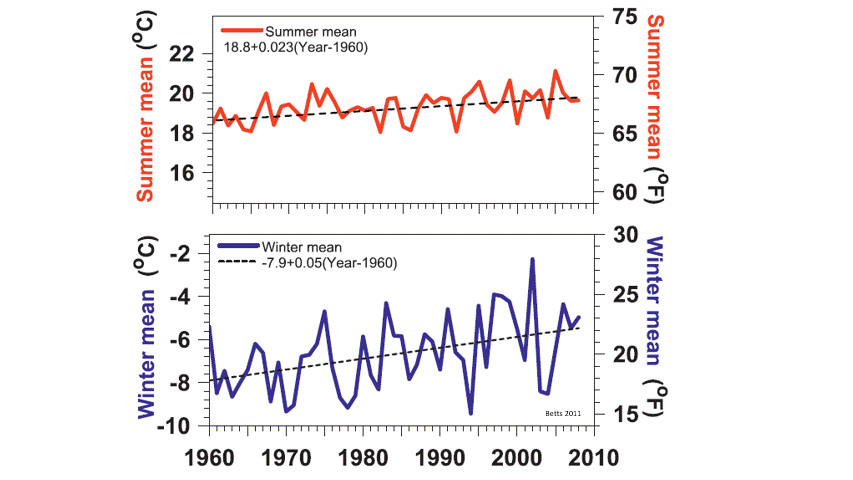
Few peer-reviewed journal articles reject global warming. There is no global conspiracy. These journal articles are written by scientists from around the world and the arguments and data have been carefully reviewed by other scientists. Remember, our understanding of how nature works has allowed us to build the technology, and revel in the medical advances, that are so dear to us. A warming world is clearly in line with how we live and how we understand nature.
We rely on ecosystem services for our survival, yet the climate crisis weakens those benefits. What will you do?

Keep up with the news and ideas related to climate:
- Twenty-first century sea-level rise could exceed IPCC projections for strong-warming futures (Dec 2020)
- The Intergovernmental Panel on Climate Change
- Rebound in carbon emissions expected in 2021 after fall caused by Covid (Dec 2020)
- Global Temperatures Already 1.2ºC Above Pre-Industrial Levels (Dec 2020)
- Investigating climate change’s ‘humidity paradox’ (Dec 2020)
- The emergence of heat and humidity too severe for human tolerance (May 2020)
- Mass Extinctions Happen Every 27 Million Years (Dec 2020)
- Rivers of air in the sky are melting huge patches of Antarctic sea ice (Dec 2020)
- Carbon monitor, a near-real-time daily dataset of global CO2 emission from fossil fuel and cement production (Nov 2020)
- A third of my country was just underwater. The world must act on climate (Oct 2020)
- 25-Year Study of Nuclear vs Renewables Says One Is Clearly Better at Cutting Emissions (Oct 2020)
- Land in Russia’s Arctic Blows ‘Like a Bottle of Champagne’ (Sep 2020)
- Future of the human climate niche (May 2020)
- Climate change: More than 3bn could live in extreme heat by 2070 (May 2020)
- Anthropogenic megadrought (May 2020)
- Climate Change Is Making Hurricanes Stronger (May 2020)
- Carbon Clock (current)
- Estimating global mean sea-level rise and its uncertainties by 2100 and 2300 from an expert survey (June 2020)
- Global glacier melt raises sea levels and depletes once-reliable water source (June 2020)
- Jakatra, The world’s fastest sinking city (April 2020)
- Understanding and managing connected extreme events (June 2020)
- The velocity of climate change (Dec 2009)
- Michael Moore Releases ‘Planet Of The Humans’ (March 2020)
- A Bomb in the Center of the Climate Movement, by Michael Moore (March 2020)